Professional Responsibility Links
The end of privacy

At birth, your data trail began. You were given a name, your height and weight were recorded, and probably a few pictures were taken. A few years later, you were enrolled in day care, you received your first birthday party invitation, and you were recorded in a census. Today, you have a Social Security or national ID number, bank accounts and credit cards, and a smart phone that always knows where you are. Perhaps you post family pictures on Facebook; tweet about politics; and reveal your changing interests, worries, and desires in thousands of Google searches. Sometimes you share data intentionally, with friends, strangers, companies, and governments. But vast amounts of information about you are collected with only perfunctory consent—or none at all. Read more ...
Angry Turks Demand Answers After Mine Disaster
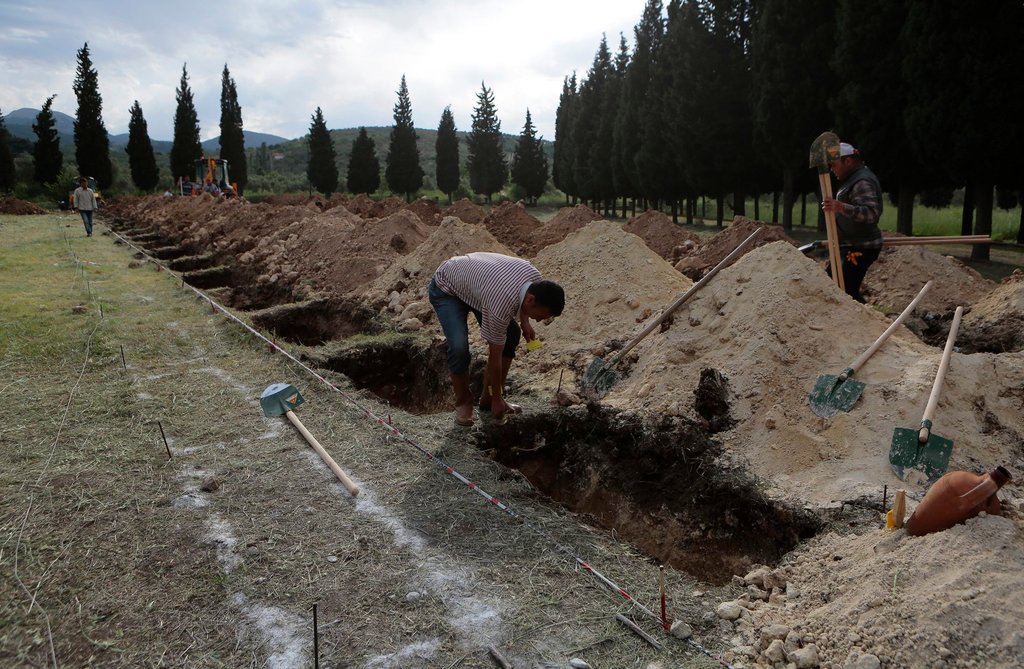
SOMA, Turkey — As hopes began to fade for hundreds of coal miners still trapped underground in a hellish explosion, antigovernment protests broke out across the country on Wednesday while victims’ families demanded answers in what is emerging as perhaps the worst industrial accident in the country’s history.
Thousands of people have gathered here in Soma, the nearest town to the mine, in hopes of getting news of relatives and friends who are unaccounted for. Their frustrations erupted in a rock-throwing protest in front of the headquarters of the Justice and Development Party of Prime Minister Recep Tayyip Erdogan that was broken up by the police in clouds of tear gas. Demonstrations also broke out in Ankara, the capital, and in Istanbul. Read more ...
West Virginia chemical spill into Elk River contaminating air and water quality
The complexities and implications of the chemical spill into West Virginia‘s Elk River keep growing, according to a new study. The lack of data motivated researchers to take on essential odor-related research that went beyond their National Science Foundation Rapid Response Research grant to better understand the properties of the chemical mixture called crude 4-methylcyclohexane methanol, the major component in the crude mix of the spilled chemicals into the Elk River. It is used in the separation and cleaning of coal products.
In the more than two months since the Jan. 9 chemical spill into West Virginia's Elk River, new findings reveal the nature of the chemicals that were released into the water and then into the air in residents' houses.
"Based on our increasing understanding of the chemicals involved in the water crisis, the complexities and implications of the spill keep growing," said Andrea Dietrich, professor of civil and environmental engineering at Virginia Tech. "People are still afraid to drink the water; odors persist in schools, residences, and businesses; data are still lacking for the properties of the mixture of chemicals in the crude MCHM that spilled." Read more ...

Scientists offered cash to dispute climate study
Link recommended by Sophia Ewens
Scientists and economists have been offered $10,000 each by a lobby group funded by one of the world's largest oil companies to undermine a major climate change report due to be published today.
Letters sent by the American Enterprise Institute (AEI), an ExxonMobil-funded thinktank with close links to the Bush administration, offered the payments for articles that emphasise the shortcomings of a report from the UN's Intergovernmental Panel on Climate Change (IPCC). Read more ...

'Worst Case' BP Ruling on Gulf Spill Means Billions More in Penalties
Link recommended by Rachel Funk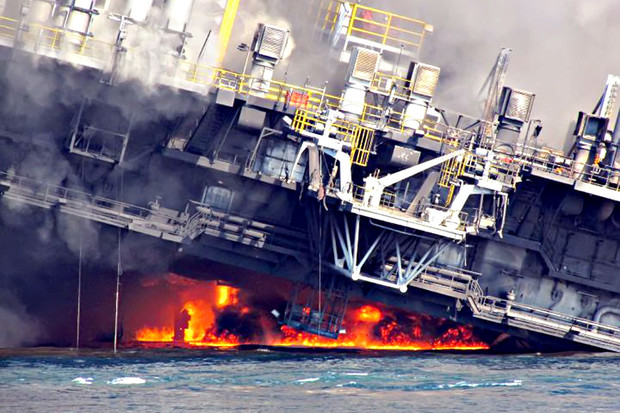
BP Plc acted with gross negligence in setting off the biggest offshore oil spill in U.S. history, a federal judge ruled, handing down a long-awaited decision that may force the energy company to pay billions of dollars more for the 2010 Gulf of Mexico disaster.
U.S. District Judge Carl Barbier held a trial without a jury over who was at fault for the catastrophe, which killed 11 people and spewed oil for almost three months into waters that touch the shores of five states. Read more ...

Site Unseen
Link recommended by Olga Bannova
A migrant construction worker rests at the end of his shift on Saadiyat Island, where, in addition to the Guggenheim, institutions including the Louvre and New York University are building outposts.
It’s not my duty as an architect to look at it,” Zaha Hadid told The Guardian in late February. Her comment came after the news organization revealed that more than 500 Indian and 382 Nepalese workers had died in the last two years’ preparations for the 2022 FIFA World Cup in Qatar, an event for which she has designed a stadium. “I have nothing to do with the workers,” Hadid said.
Activists and the media pilloried Hadid for her aloof stance. But her comment underscores an issue that architecture firms with international practices often encounter but rarely discuss. In a global economy, as the process of making is increasingly alienated (and physically removed) from design, an architect’s duty to safeguard workers’ rights becomes perplexed. The AIA’s ethical standard on this—“Members should uphold human rights in their professional endeavors”—is not a mandatory dictum. But activists believe architects have more responsibility than professional codes dictate. Read more ...

An Architect’s Code
Link recommended by Olga Bannova
A group called Architects, Designers, and Planners for Social Responsibility (ADPSR) has taken the stance that there are some buildings that just should not have been built. Buildings that, by design, violate standards of human rights.
Specifically, this refers to prisons with execution chambers, or prisons that are designed keep people in long-term isolation (or as prison officials call it, “segregation”). The latter kind of prison is called a “supermax,” or “security housing unit” (SHU). There is no legal definition for solitary confinement, so it’s up for debate as to whether the SHU constitutes solitary confinement. Read more ...

As engineers, we must consider the ethical implications of our work
Link recommended by Lindsay Brull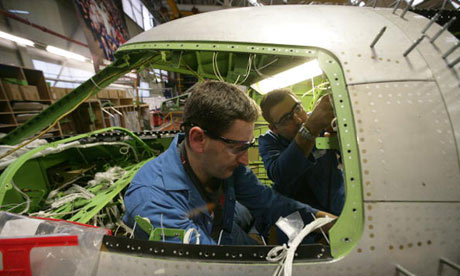 Engineering ethics are mostly technical: how to design properly, how to not cut corners, and how to serve our clients well. Photograph: Bloomberg
Engineering ethics are mostly technical: how to design properly, how to not cut corners, and how to serve our clients well. Photograph: Bloomberg
One aspect of Edward Snowden's revelations in the Guardian about the NSA's surveillance activities has received less attention than it should. The algorithms that extract highly specific information from an otherwise impenetrable amount of data have been conceived and built by flesh and blood, engineers with highly sophisticated technical knowledge. Did they know the use to which their algorithms would be put? If not, should they have been mindful of the potential for misuse? Either way, should they be held partly responsible or were they just "doing their job"? Read more ...
Diesel exhaust rapidly degrades floral odours used by honeybees
Honeybees utilise floral odours when foraging for flowers; we investigated whether diesel exhaust pollution could interrupt these floral odour stimuli. A synthetic blend of eight floral chemicals, identified from oilseed rape, was exposed to diesel exhaust pollution. Within one minute of exposure the abundances of four of the chemicals were significantly lowered, with two components rendered undetectable. Honeybees were trained to recognise the full synthetic odour mix; altering the blend, by removing the two chemicals rendered undetectable, significantly reduced the ability of the trained honeybees to recognize the altered odour. Furthermore, we found that at environmentally relevant levels the mono-nitrogen oxide (NOx) fraction of the exhaust gases was a key facilitator of this odour degradation. Such changes in recognition may impact upon a honeybee’s foraging efficiency and therefore the pollination services that they provide. Read more ...

Exemplary Ethical Conduct I’m Embarrassed I Didn’t Know About Dept.: Jonas Salk and Albert Sabin
Link recommended by Rahul Goel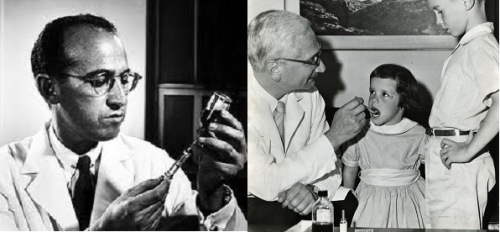 Salk and Sabin, true professionals. Did you know?
Salk and Sabin, true professionals. Did you know?
You learn the damnedest things in the damnedest places, which is a good reason to keep your ears open wherever you may be.
Last night I found myself listening to Michael Savage, easily the most offensive of all conservative talk show hosts, and he gives Rush and Mark Levine a run for their money in the ego category, too. I only listen to Savage by accident, and then only in bites of five minutes or less; it frightens me that millions of people might be influenced by such consistently hateful commentary. Read more ...

Ethical issues and sports medicine
By Nancy M. Cummings, MD, and Matthew J. Matava, MDLink recommended by Wen-Hao Chou
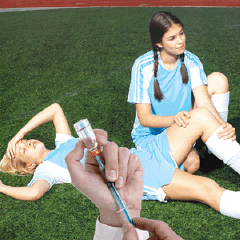
Does the Hippocratic maxim apply to the modern-day athlete?
“Do no harm” seems pretty simple. Yet, it is important to define “harm”: Is it purely physical or could it be psychological or financial?
In today’s sports medicine arena, this definition is not so clear. The traditional physician-patient relationship now has become, at the least, a triad—doctor-patient-team relationship. In some cases, the financial “health” of the patient threatens to cloud the picture. Read more ...

The ethics of nuclear power: Social experiments, intergenerational justice, and emotions
Behnam Taebi, Sabine Roeser, Ibo van de PoelLink recommended by Shyam Panthi
The Fukushima accident has brought nuclear power to the forefront of political controversy again. This controversy is particularly hard to resolve due to four specific characteristics of the risks of nuclear energy:(i) a nuclear accident has a low probability but potentially very large consequences; (ii) nuclear risk assessments are thwarted by high levels of uncertainty and even ignorance; (iii) nuclear waste remains radiotoxic for several hundred thousands of years; and (iv) nuclear technology gives rise to intense emotions by both proponents and opponents. As a consequence, traditional approaches to risk assessment no longer suffice to deal adequately with the risks of nuclear power and should be supplemented by an explicit discussion of themoral acceptability of the risks of nuclear technology. Read more ...
$168 million payout to Johnson & Johnson whistleblowers
By Gregory WallaceThe $167.7 million award is one of the largest whistleblower awards in U.S. history. It will be divided among an unspecified number of whistleblowers in three states, according to the Justice Department.
The $2.2 billion settlement between Johnson & Johnson (JNJ, Fortune 500) and authorities settles charges that J&J marketed drugs for unapproved uses and gave kickbacks to doctors and nursing homes. Attorney General Eric Holder said Johnson & Johnson and two subsidiaries "lined their pockets at the expense of American taxpayers, patients and the private insurance industry." Read more ...

Reith Lectures 2010, 1st lecture: “The Scientific Citizen”
Link recommended by Olga Datskova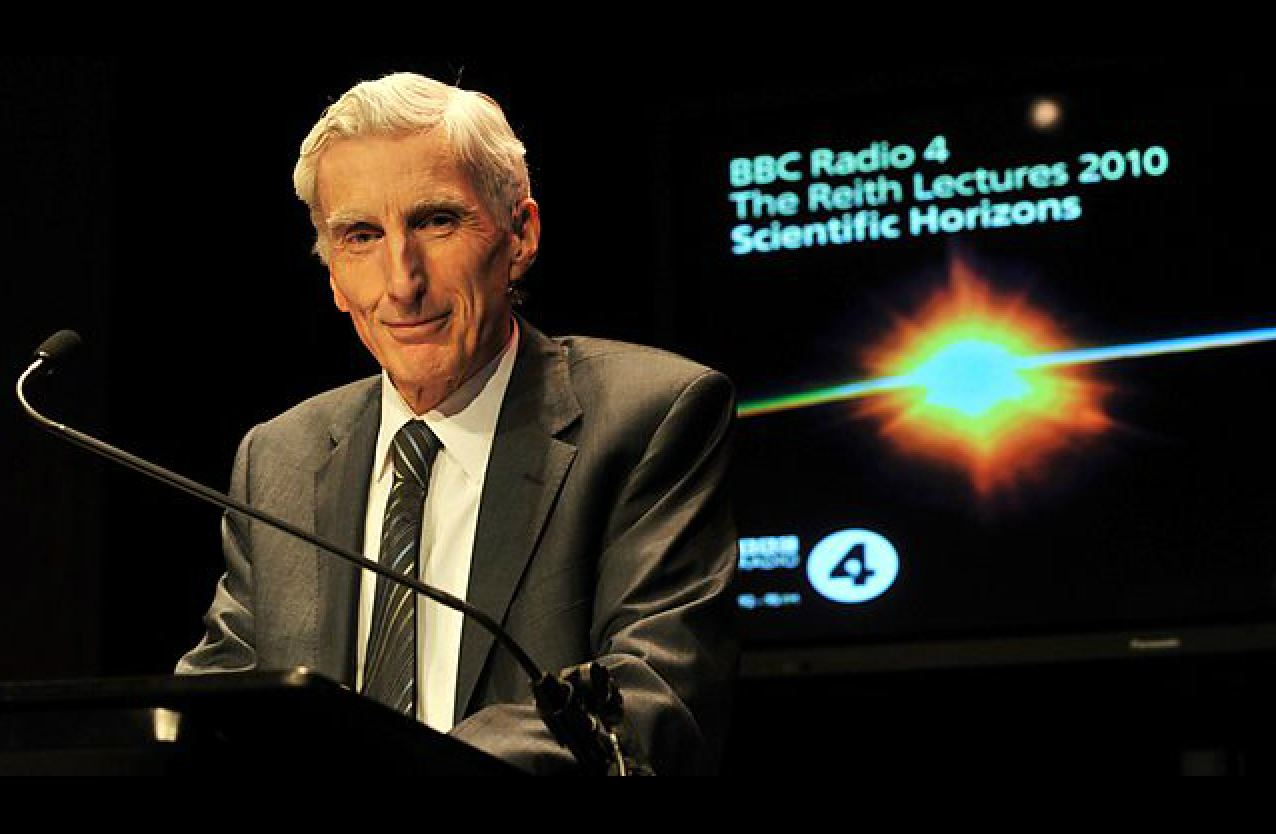
In the first of this year's Reith Lectures, entitled Scientific Horizons, Martin Rees, President of the Royal Society, Master of Trinity College and Astronomer Royal, explores the challenges facing science in the 21st century. We are increasingly turning to government and the media to explain the risks we face. But in the wake of public confusion over issues like climate change, the swine 'flu vaccine and, more recently, Iceland's volcanic ash cloud, Martin Rees calls on scientists to come forward and play a greater role in helping us understand the science that affects us all. Read more ...
U.N. climate change report points blame at humans
By Dave Hennen, Brandon Miller and Eliott C. McLaughlin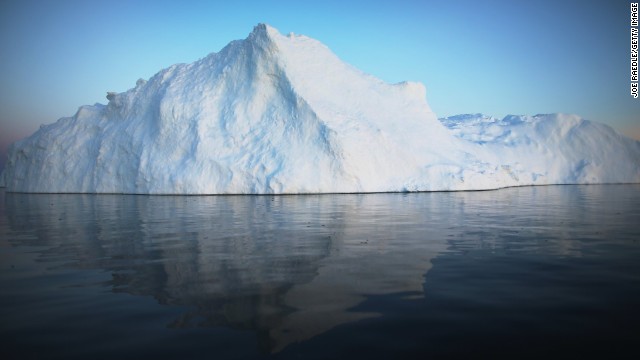
(CNN) -- The world's getting hotter, the sea's rising and there's increasing evidence neither are naturally occurring phenomena.
So says a report from the U.N. International Panel on Climate Change, a document released every six years that is considered the benchmark on the topic. More than 800 authors and 50 editors from dozens of countries took part in its creation. Read more ...
Japan to issue gravest warning since quake on Fukushima nuclear plant leaks
By Junko Ogura and Katie Hunt, CNN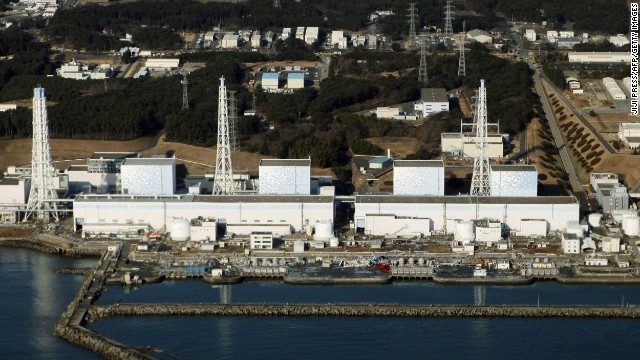
Tokyo (CNN) -- Japan is poised to declare a toxic water leak at the Fukushima nuclear plant a level 3 "serious incident," its gravest warning since the massive 2011 earthquake and tsunami that sent three reactors into meltdown. Read more ...
Hanford Nuclear Waste Cleanup Plant May Be Too Dangerous
By Valerie Brown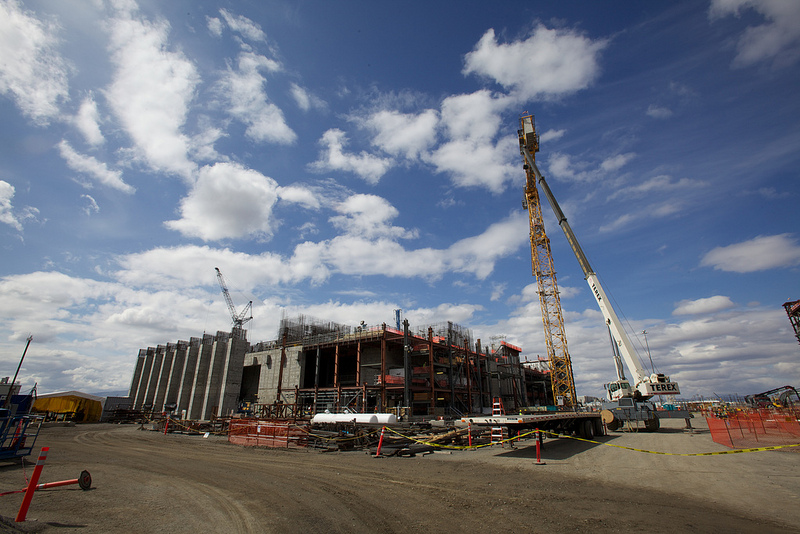
Safety issues make plans to clean up a mess left over from the construction of the U.S. nuclear arsenal uncertain. The most toxic and voluminous nuclear waste in the U.S.—208 million liters —sits in decaying underground tanks at the Hanford Site (a nuclear reservation) in southeastern Washington State. Read more ...
The Low-Level Nuclear Threat
In Rome last week, biologists from radiation-protection agencies and research institutes around the world who have taken up the challenge of low-dose radiation research met to discuss how to share contemporary information, and how to make the vast archives of historical data available to all.
1. The article in Nature
2. The article in New York Times
3. The Multidisciplinary European Low Dose Initiative
Records: Texas plant hadn't told feds about explosive fertilizer
By Matt Smith, CNNupdated 5:39 AM EDT, Fri April 26, 2013
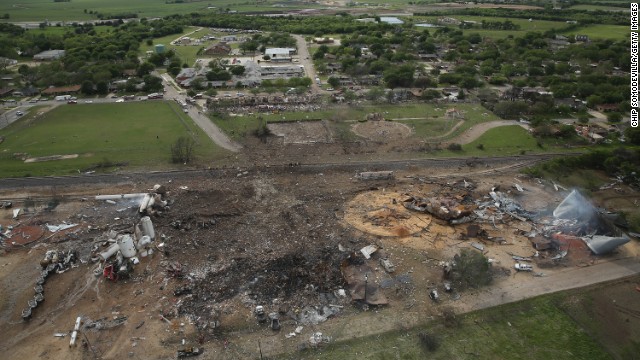
The fertilizer plant that blew up in Texas last week warned state and local officials but not federal agencies that it had 270 tons of highly volatile ammonium nitrate on site, according to regulatory records. Read more ...
Almost half of Fukushima children now have thyroid disorders from radiation poisoning, officials blame 'too much seafood'
Sunday, December 02, 2012 by: PF Louis(NaturalNews) Not much information comes out of Japan about Fukushima anymore, and the American MSM seems to have forgotten what watered down reporting they had done earlier. But the human suffering has begun in Japan, and even the Japanese government is trying to pretend it's not happening.
The curtain is pulled over the total impact of this disaster to protect the nuclear power industry. The government and media blackout has become known as "plume gate" for the radioactive plume that was released from the Fukushima mishap. Read more ...
Risk of Ischemic Heart Disease in Women after Radiotherapy for Breast Cancer
Exposure of the heart to ionizing radiation during radiotherapy for breast cancer increases the subsequent rate of ischemic heart disease. The increase is proportional to the mean dose to the heart, begins within a few years after exposure, and continues for at least 20 years. Women with preexisting cardiac risk factors have greater absolute increases in risk from radiotherapy than other women. (Funded by Cancer Research UK and others.)
1. The article in The New England Journal of Medicine
2. The article in The Wall Street Journal
Underground Nuclear Tanks Leaking in Washington State
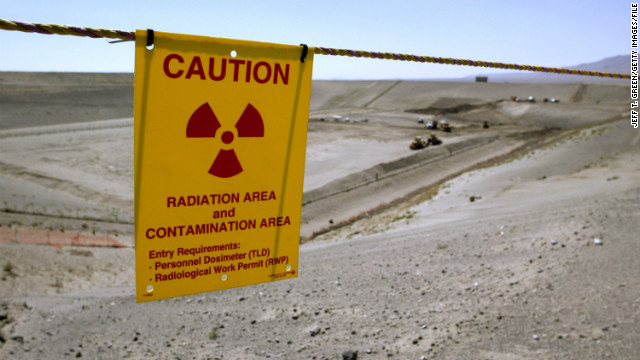
The Hanford site in southeast Washington state once played a major part in U.S. plutonium production.
Six underground tanks holding radioactive waste are leaking at the Hanford Nuclear Reservation in eastern Washington, Gov. Jay Inslee said on Friday after a meeting with federal officials overseeing the cleanup of the nation’s most polluted nuclear site.
1. The article in The New York Times
2. The article in CNN
Trial Against BP To Begin Over 2010 Rig Explosion
Some are calling it "the trial of century." In New Orleans Monday, dozens of lawyers will pack into a federal courtroom to argue over BP's civil liability from the 2010 Gulf of Mexico oil spill. Millions of barrels of oil fouled beaches from Texas to Florida. Billions of dollars are at stake.
1. The article in CNN
2. Commentary by NPR
Hard lessons for U.S. nuclear safety from Fukushima meltdown
By Daniel P. Aldrich, Special to CNNupdated 9:26 PM EDT, Thu May 24, 2012
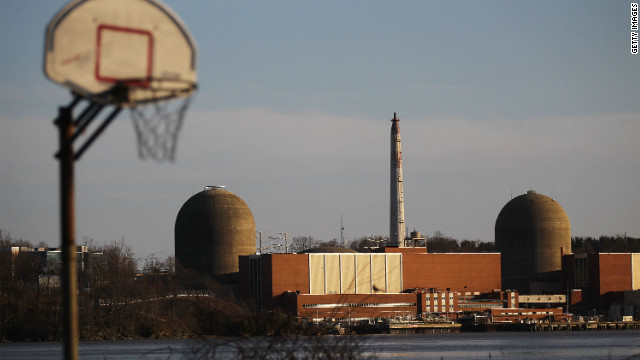
The NRC said the U.S. nuclear plant with the greatest earthquake risk is Indian Point, 24 miles north of New York City.
(CNN) -- The earthquake and tsunami in northeastern Japan on March 11 last year took an estimated 19,000 lives, caused the evacuation of about 300,000 people, and set off the worst nuclear accident since Chernobyl. The meltdowns of the Fukushima Daiichi reactors ended Japan's plans to produce half of its electricity through nuclear energy.
All of Japan's remaining reactors are offline, and experts believe that strong anti-nuclear feelings will keep them from restarting for some time. Beyond Japan's shores, the crisis has pushed Germany, Italy and Switzerland to end their commitment to nuclear power. Fukushima has given U.S. nuclear regulators four important lessons given a tendency to downplay the far-reaching consequences of disasters and outdated ways of preparing for them. Read more ...
Review of UT Fracking Study Finds Failure to Disclose Conflict of Interest (Updated)
BY TERRENCE HENRY | DECEMBER 6, 2012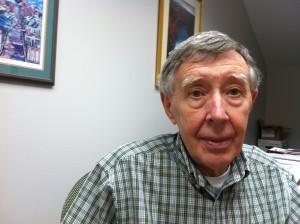
Resignation and Retirement Result
The long-awaited review of a controversial study on the drilling process known as hydraulic fracturing, or “fracking,” was released today, and it finds numerous errors and flaws with how the study was conducted and released, as well as University of Texas policies for disclosing conflicts of interest.
The head author of the study, Dr. Charles “Chip” Groat, has retired in the wake of the controversy, and the head of the Energy Institute that released it, Dr. Raymond Orbach, has resigned as head of the Institute, the University announced today. Listen to it.
Ignoring the Science on Mammograms
By DAVID H. NEWMAN, M.D.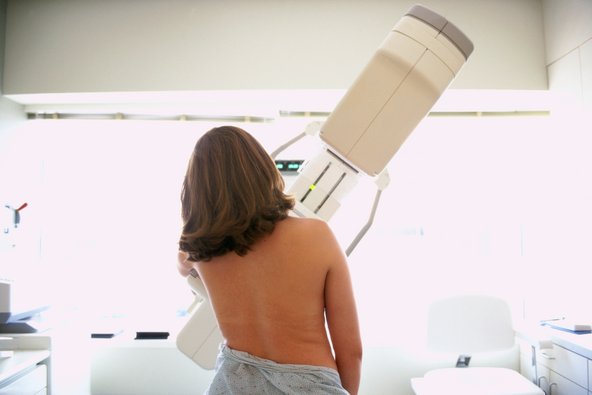
Last week The New England Journal of Medicine published a study with the potential to change both medical practice and public consciousness about mammograms. Read more...
The biological impacts of the Fukushima nuclear accident on the pale grass blue butterfly
Scientific Reports 2, Article number: 570 | doi:10.1038/srep00570Received 06 June 2012 | Accepted 24 July 2012 | Published 09 August 2012
The collapse of the Fukushima Dai-ichi Nuclear Power Plant caused a massive release of radioactive materials to the environment. A prompt and reliable system for evaluating the biological impacts of this accident on animals has not been available. Here we show that the accident caused physiological and genetic damage to the pale grass blue Zizeeria maha, a common lycaenid butterfly in Japan. We collected the first-voltine adults in the Fukushima area in May 2011, some of which showed relatively mild abnormalities. The F1 offspring from the first-voltine females showed more severe abnormalities, which were inherited by the F2 generation. Adult butterflies collected in September 2011 showed more severe abnormalities than those collected in May. Similar abnormalities were experimentally reproduced in individuals from a non-contaminated area by external and internal low-dose exposures. We conclude that artificial radionuclides from the Fukushima Nuclear Power Plant caused physiological and genetic damage to this species.
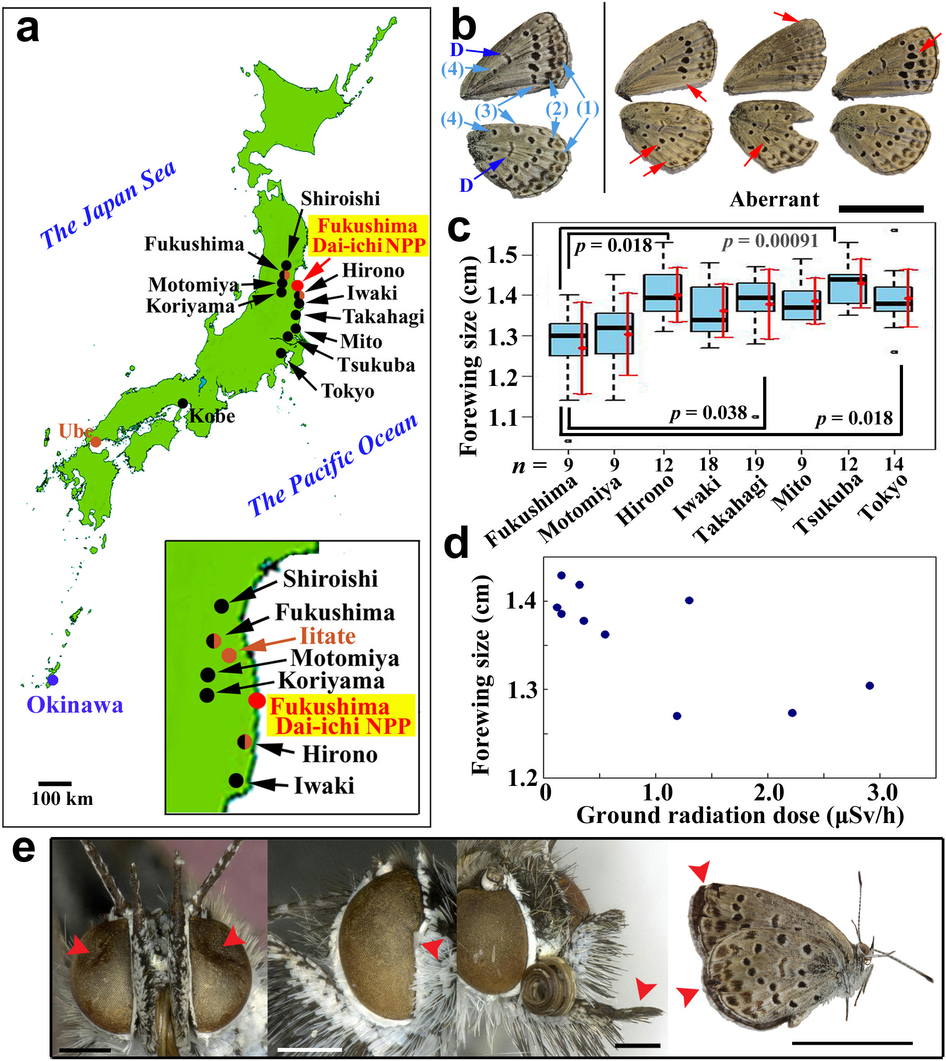 (a) Collection localities. A red dot indicates the location of the Fukushima Dai-ichi NPP. Black dots and black half dots indicate the cities from which the first-voltine adults were collected. Brown dots and brown half dots indicate cities from which the host plant leaves were collected for the internal exposure experiment. All experiments were performed in Okinawa, marked by a blue dot. Inset shows the collection localities around the NPP. (b) Representative wings with normal (leftmost) and aberrant colour patterns. Numbers 1, 2, 3, and 4 indicate the first, second, third, and fourth spot arrays, respectively, and “D” indicates the discal spot. Red arrows indicate loss, dislocation, and weak expression of spots (left individual), weak expression and dislocation of spots (middle individual), and enlargement of spots (right individual). These samples were caught in Mito except for the leftmost aberrant specimen, which was caught in Iwaki. Scale bar, 1.0 cm.
(a) Collection localities. A red dot indicates the location of the Fukushima Dai-ichi NPP. Black dots and black half dots indicate the cities from which the first-voltine adults were collected. Brown dots and brown half dots indicate cities from which the host plant leaves were collected for the internal exposure experiment. All experiments were performed in Okinawa, marked by a blue dot. Inset shows the collection localities around the NPP. (b) Representative wings with normal (leftmost) and aberrant colour patterns. Numbers 1, 2, 3, and 4 indicate the first, second, third, and fourth spot arrays, respectively, and “D” indicates the discal spot. Red arrows indicate loss, dislocation, and weak expression of spots (left individual), weak expression and dislocation of spots (middle individual), and enlargement of spots (right individual). These samples were caught in Mito except for the leftmost aberrant specimen, which was caught in Iwaki. Scale bar, 1.0 cm.
Nuclear disaster spreeads to homes, food
Fukushima's nuclear fallout spreads through ordinary life in Japan. CNN's Kyung Lah reports.
Radioactive bluefin tuna crossed the Pacific to US
By ALICIA CHANG | Associated Press – Wed, May 30, 2012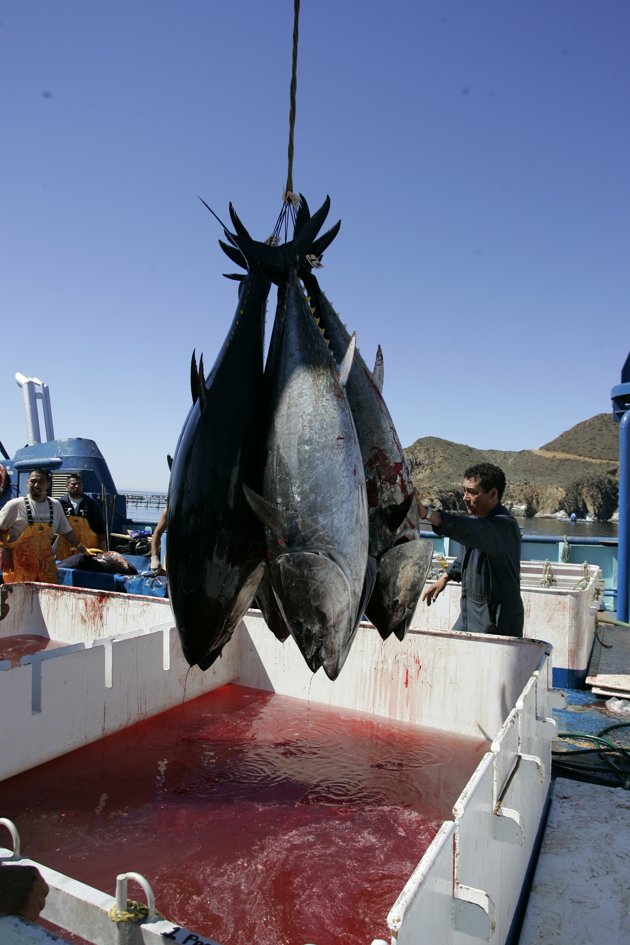
LOS ANGELES (AP) — Across the vast Pacific, the mighty bluefin tuna carried radioactive contamination that leaked from Japan's crippled nuclear plant to the shores of the United States 6,000 miles away — the first time a huge migrating fish has been shown to carry radioactivity such a distance.
"We were frankly kind of startled," said Nicholas Fisher, one of the researchers reporting the findings online Monday in the Proceedings of the National Academy of Sciences.
The levels of radioactive cesium were 10 times higher than the amount measured in tuna off the California coast in previous years. But even so, that's still far below safe-to-eat limits set by the U.S. and Japanese governments. Read more ...
CT scans for children linked to increased cancer risk
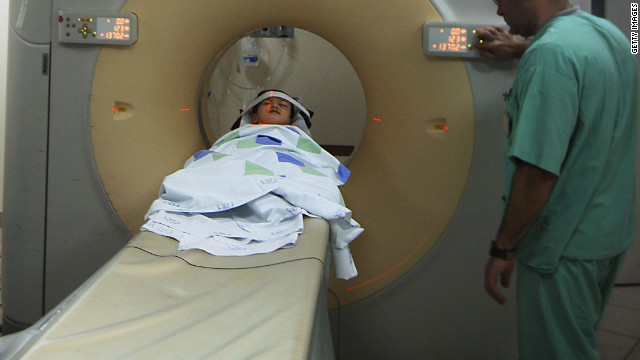 June 6th, 2012 | 06:30 PM ET
June 6th, 2012 | 06:30 PM ET
CT scans expose children to radiation that could give them cancer, according to a review of children’s imaging data published Wednesday in the British medical journal Lancet.
The researchers estimate that for every 10,000 computed tomography scans performed on children aged 10 or younger, one additional child will get a brain tumor and another additional child will get leukemia within a decade of the first scan. These cancers wouldn’t otherwise be expected, even if none of the imaging was done.
Researchers at the National Cancer Institute and Institute of Health and Society at Newcastle University in England say their investigation is the first direct evidence of such a link. They reviewed 175,000 cases.
Multiple CT scans increase a child’s risk. The researchers found radiation exposure from two to three scans can triple the risk of brain cancer and five to ten scans can triple the risk of leukemia. Read more ...
Opinion: Facebook threatens to 'Zuck up' the human race
By Andrew Keen, Special to CNN | updated 7:10 PM EDT, Wed May 30, 2012
Editor's note: Andrew Keen is a British-American entrepreneur and professional skeptic. He is the author of "The Cult of the Amateur," and "Digital Vertigo." This is the latest in a series of commentaries for CNN looking at how internet trends are influencing social culture.
(CNN) -- The news last week was all about Facebook's dodgy IPO. Investors are filing suit against Facebook about withholding "negative" assessment on its business prospects. This IPO not only "Zucked up" Silicon Valley's supposed tech bubble, but it has created the suspicion that Facebook willfully exploited the innocence of the small investor.
But something even dodgier than a potential stock market fraud is going on. The social network is taking something much more important than money from its nearly one billion members. By sabotaging what it really means to be human, Facebook is stealing the innocence of our inner lives. Read more ...

Psychology Of Fraud: Why Good People Do Bad Things
Chana Joffe-Walt and Alix Spiegel | May 1, 2012
Enron, Worldcom, Bernie Madoff, the subprime mortgage crisis.
Over the past decade or so, news stories about unethical behavior have been a regular feature on TV, a long, discouraging parade of misdeeds marching across our screens. And in the face of these scandals, psychologists and economists have been slowly reworking how they think about the cause of unethical behavior.
In general, when we think about bad behavior, we think about it being tied to character: Bad people do bad things. But that model, researchers say, is profoundly inadequate.
Which brings us to the story of Toby Groves. Listen to it.
California's dark legacy of forced sterilizations
By Elizabeth Cohen and John Bonifield, CNNupdated 1:38 PM EDT, Thu March 15, 2012
(CNN) -- Six decades ago, Charlie Follett was a teenager living in California's Sonoma State Home. As he did most days, Follett sat in a field, singing popular songs to himself, enjoying the sunshine and the solitude.
Suddenly, someone came outside to get Follett and brought him to the hospital. They told him to lie down on an operating table, and then the needle came out.
"First, they shot me with some kind of medicine. It was supposed to deaden the nerves," he said. "Then the next thing I heard was snip, snip, and that was it." Read more ...
The Plutonium Problem: Who Pays For Space Fuel?
by Nell Greenfieldboyce
November 8, 2011 NASA's next Mars rover, Curiosity, seen in this artist's rendering, will use 8 pounds of plutonium-238 as its power supply. That's a significant portion of the remaining space fuel. NASA and the Department of Energy have offered to split the costs of producing the fuel, but Congress has so far opposed that arrangement.
When NASA's next Mars rover blasts off later this month, the car-sized robot will carry with it nearly eight pounds of a special kind of plutonium fuel that's in short supply.
NASA has relied on that fuel, called plutonium-238, to power robotic missions for five decades.
But with supplies running low, scientists who want the government to make more are finding that it sometimes seems easier to chart a course across the solar system than to navigate the budget process inside Washington, D.C. Read more ...
Victims of NC forced sterilization program tell their stories
Posted: June 22, 2011Raleigh, N.C. — Several victims of North Carolina's nearly five-decade-long forced sterilization program testified Wednesday to a board deciding how to compensate people whose ability to have children was taken away from them in the name of improving society.
Nearly 3,000 of the roughly 7,600 North Carolinians sterilized between 1929 and 1975 are still alive. The Eugenics Task Force is considering whether they should be given money or other types of assistance. Read more ...
New revelations about Three Mile Island disaster raise doubts over nuclear plant safety
The truth behind the meltdown
by Sue SturgisEditor's note: This story originally appeared in Facing South, the online magazine of the Institute for Southern Studies. For links to supporting documents, please see the original story.
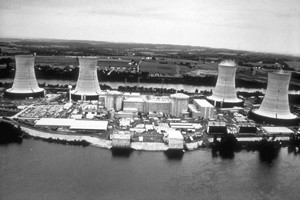
It was April Fool's Day, 1979—30 years ago this month—when Randall Thompson first set foot inside the Three Mile Island nuclear power plant near Middletown, Pa. Just four days earlier, in the early morning hours of March 28, a relatively minor problem in the plant's Unit 2 reactor sparked a series of mishaps that led to the meltdown of almost half the uranium fuel and uncontrolled releases of radiation into the air and surrounding Susquehanna River. Read more ...
Doubt is their product
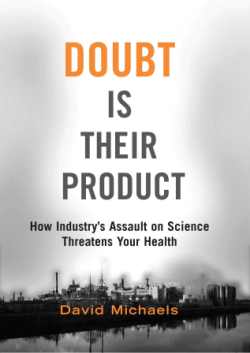
"Doubt is our product," a cigarette executive once observed, "since it is the best means of competing with the 'body of fact' that exists in the minds of the general public. It is also the means of establishing a controversy."
In this eye-opening exposé, David Michaels reveals how the tobacco industry's duplicitous tactics spawned a multimillion dollar industry that is dismantling public health safeguards. Product defense consultants, he argues, have increasingly skewed the scientific literature, manufactured and magnified scientific uncertainty, and influenced policy decisions to the advantage of polluters and the manufacturers of dangerous products. Read more ...











